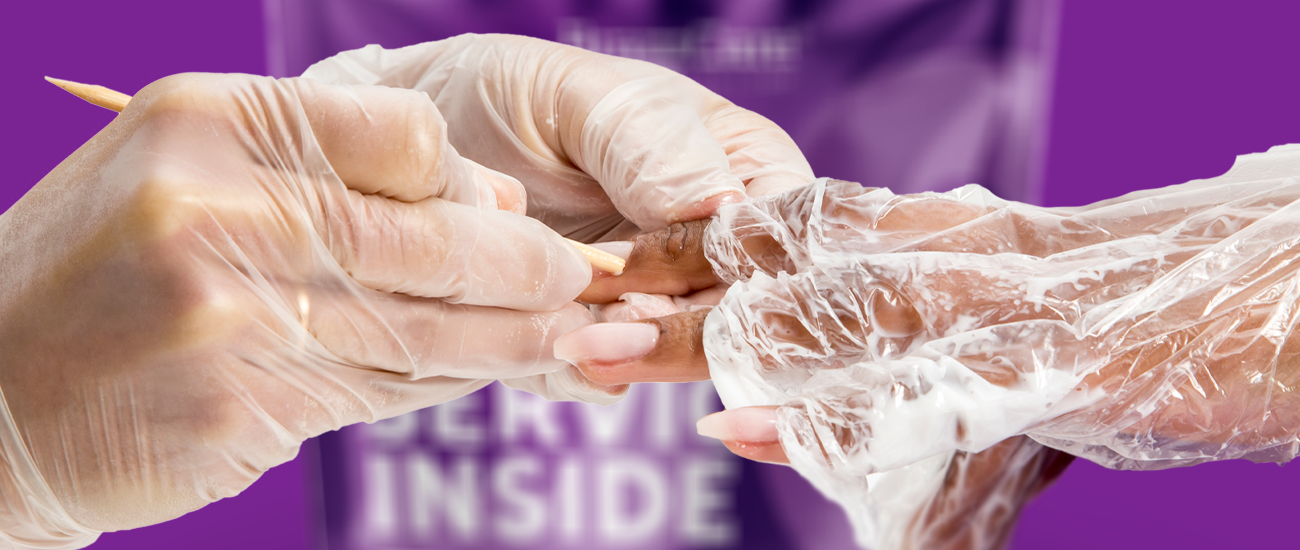.At BrazzCare, we believe that innovation starts by rethinking the basics.
The waterless manicure is not just a trend — it's a smarter, healthier way to care for nails.
What’s the Real Difference?
In a traditional manicure, the nails are soaked in water. In a waterless manicure, this step is completely eliminated and replaced with the application of disposable gloves filled with a mineral-rich emollient.
The result? A more luxurious, hygienic, and efficient experience.
But why is removing water so important?
Scientific studies show that soaking nails weakens them. Water causes the nail plates to expand and lose their natural curve. When the polish dries faster than the nail, cracks and premature chipping occur.
In short: soaking undermines the strength, health, and durability of your manicure.
Stronger Nails, Longer-Lasting Polish
Waterless manicures keep the nails’ natural structure intact.
Clients report that their polish lasts significantly longer, and cuticles stay healthier — without the dryness and peeling that often follows a traditional soak.
More Hygienic. More Sustainable.
Eliminating water, bowls, and soak dishes also removes potential hygiene risks.
No cross-contamination. No compromises.
Just a clean, professional, and sustainable service — exactly what modern beauty spaces demand.
The Verdict?
A waterless manicure provides the same pampered feeling as a traditional service — but enhances nail health, improves polish durability, and meets today’s standards for hygiene and sustainability.
Ready to elevate your salon experience?





